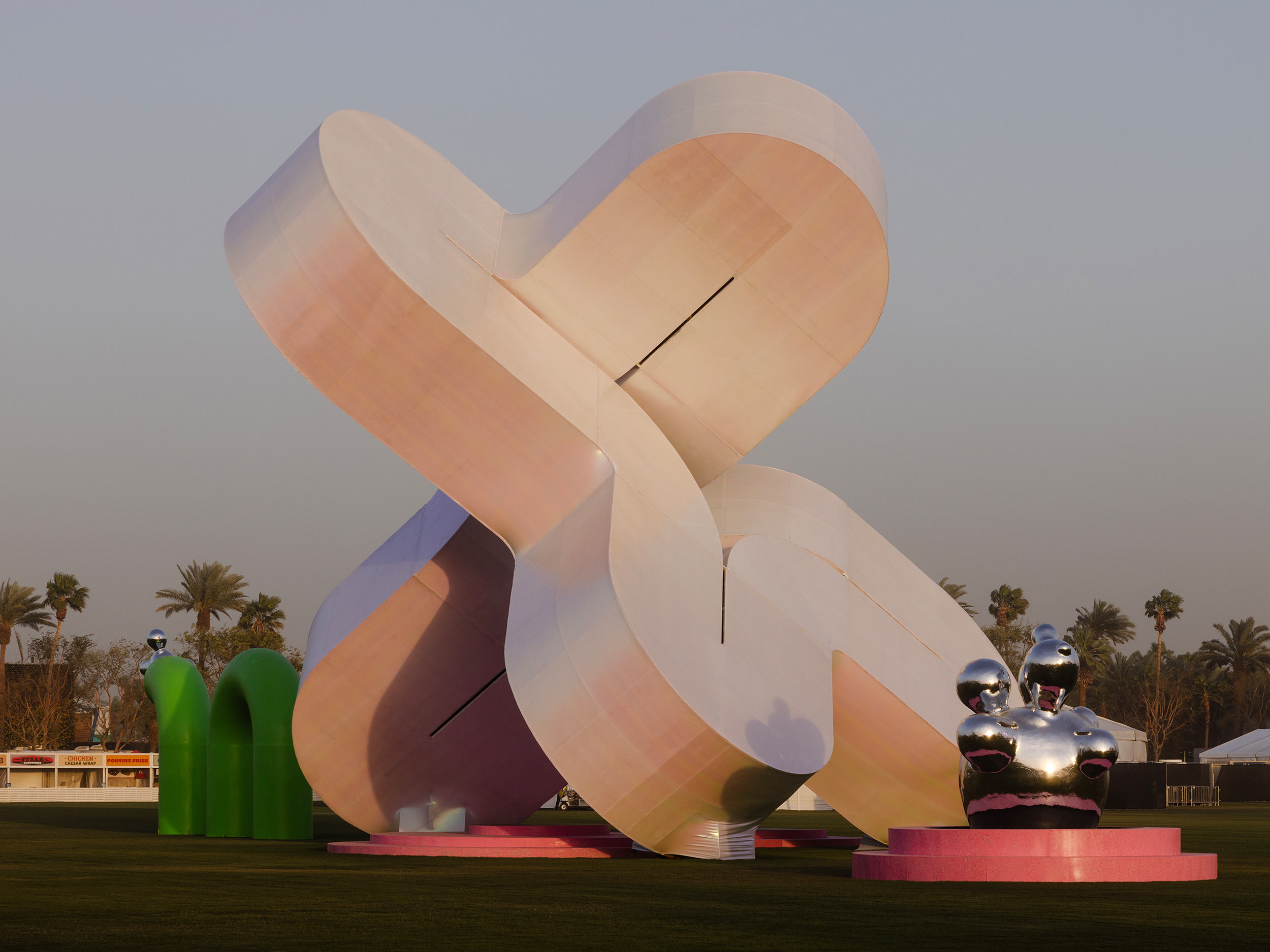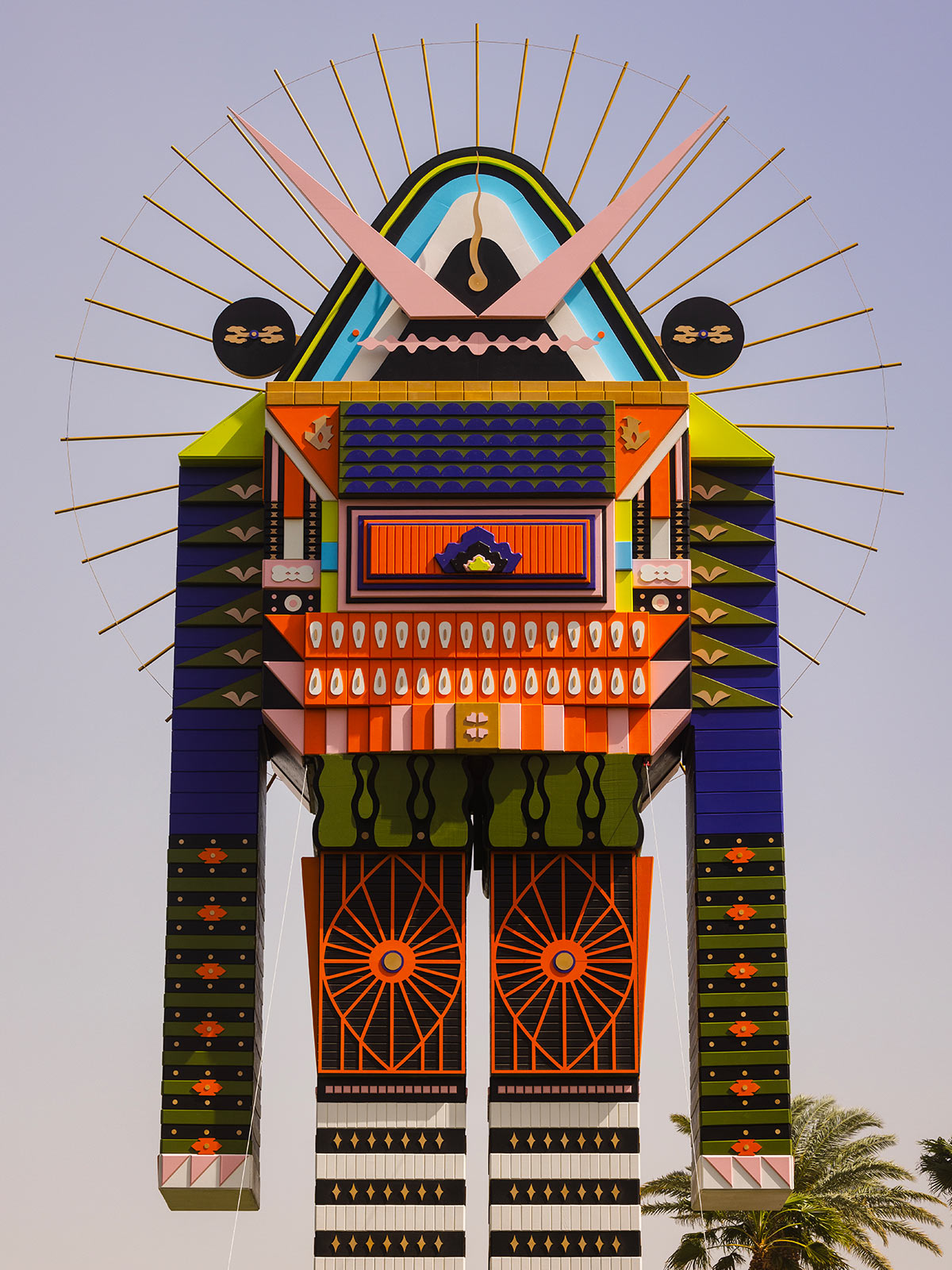On the final day of the viral festival, Raffi Lehrer joins Document to discuss the impact of large-scale installation work, and which sorts of creatives make the cut
A quarter of a million people headed to Coachella Valley Music and Arts Festival at the Empire Polo Club in Indio, California to see a lineup that included headliners Bad Bunny, Blackpink, Blink-182, and Björk, as well as acts like Labrinth, Charli XCX, Gorillaz, Blondie, Underworld, Rosalía, the Chemical Brothers, and more. The music may be the main motive behind going to Coachella, but there’s a reason why the word arts is in the festival’s name: the larger-than-life installations that give attendees a meeting point, and provide fantastical backgrounds for countless photos posted to Instagram.
This year, Raffi Lehrer—the curator behind it all—and his team selected four artists to present immersive installations at Coachella: Kumkum Fernando, Güvenç Özel, Maggie West, and Vincent Leroy. Fernando, who was born in Sri Lanka and currently lives in Vietnam, created three giant robots—65 to 70 feet high—inspired by Sri Lankan folklore and Tibetan and Hindu temples. Özel used his AI experience to build a 60-foot curvilinear sculpture inspired by the Pribram-Bohm Composite Holoflux Theory. “I generated the visuals through a survey of our understanding of how we emulate reality through computer graphics,” the artist says. West planted a “garden” of flowers that don’t grow in the desert, which came to life at night thanks to digital mapping that animated them. Leroy showed Molecular Cloud, a cluster of fuchsia reflective spheres that floated above festival-goers’ heads.
Document caught up with Lehrer on the final day of Coachella 2023, discussing how he became a curator for Golden Voice—the company that produces the festival—his selection process, and the powerful effect large-scale installations have on attendees.
Ann Binlot: How did you start curating the Coachella art program?
Raffi Lehrer: The first time I worked out here was 2015. I was producing large-scale installations for the artists Niki and Simon Haas; I used to run their studio in a past life. I was producing this piece for Paul Clemente, who is now the art director of Coachella. I fell in love with the pace and scale of the overall production, and also his vision for what the program could be. The next year, [I introduced him to] a bunch of different artists and designers. We clicked, and we’ve been working with each other ever since.
Ann: How do you search for an artist whose work would be appropriate for the scale and proportion of a music festival of this size?
Raffi: It can be someone who’s never made large-scale installations in their life, or worked beyond a model scale. The ideas have to be legible, and have a visceral quality that I can connect with and translate to out here. It can really be any artist or architect or designer.
Ann: Do you take into account whether or not the works will photograph well for Instagram?
Raffi: I don’t think it’s Instagram, necessarily. If a piece looks good when you see it in person, it’s gonna look good on your phone, you know?
Ann: This year, you have four artists—Kumkum Fernando, Maggie West, Güvenç Özel, and Vincent Leroy. How did you find them, and why did you choose them?
Raffi: I chose those artists for different reasons. Maggie was out here last year, checking out the show. Güvenç, we’ve been talking to since 2018, 2017. Sometimes, those relationships and projects can take a couple of years to arrive at their final form. Any conversation we start with an artist, it’s always a given that it could be something that hits—and we can make something happen in six, nine months. Or it could take a couple of years. At the end of the day, the lens for everything is like, How can we make as big of an impact as possible on the field?
“At the end of the day, the lens for everything is like, How can we make as big of an impact as possible on the field?”
Ann: What is the magic sauce? What qualities does an artist or their work need to have in order to cut it at Coachella?
Raffi: A work is most successful when you know that someone—maybe a young twentysomething, who hasn’t been to a ton of museums—can come out and connect with the art. Hopefully, they want to learn more about it. Even if it doesn’t go that far, they still get a lot out of the experience of the art in that moment, and that helps expose them to art. That’s a success. And if someone like yourself, or another architecture critic, design critic, or journalist can come out and delve more deeply into each of the works, that to me is more than I could score.
Ann: What are some of the interesting ways in which festival-goers interact with the art?
Raffi: I love going to see people hanging out in the world: How everyone’s able to engage with [Coachella], because it’s a part of this—it’s huge, it’s part of the public square, this little pop-up city of ours for six days. A quarter million people get to hang out there, and these works act as landmarks, icons. People get shade, take photos, and use them as a place to find their friends and reconvene.
Ann: What’s next for you? What’s in store for Coachella 2024?
Raffi: We’re always looking for interesting artists, architects, and designers. What I love about our program is that there’s no theme—there’s no set discourse or agenda that we’re trying to push. It’s all very interdisciplinary and not beholden to all these very stifling art-world norms.
Ann: What is the most challenging part on your end?
Raffi: Staying awake for it all.











